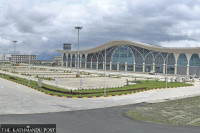National
Majority of the missing persons are never found, but officials say the data is not telling the whole story
Police and the officials of the National Child Rights Council believe many cases are passed as unsolved because the authorities are almost never informed when a missing person is found.
Shuvam Dhungana
Six-year-old Smriti Karki went missing from near her home at Bharatpur city in Chitwan on September 5.
Her parents filed a missing child report with the district police, and a search party was launched. Two days after Smriti’s disappearance, her body was discovered not far away from her home. Her disappearance and subsequent death remain unsolved.
Krishna Prasad Bhusal, of National Child Rights Council, says Smriti’s case is among the rare instances where a child from a poor family background is reported missing and is found dead.
“When children born to poor parents go missing, they are usually found working as domestic help, cleaners in hotels and restaurants, and helpers in passenger vehicles and garages,” Bhusal told the Post.
According to Nepal Police, roughly 16 missing persons cases are reported across the country daily, and the majority of them are never found.
Bhusal, however, is sceptical about the majority of the missing persons, who are mostly children and women, never reuniting with their families.
“Sometimes a missing person is found a few days after her disappearance, but the authorities are never notified. So to the police, the person remains an unsolved missing case,” Bhusal said.
Out of 38,349 missing persons cases recorded by the police across the country in the last five fiscal years, only 9,160 cases were solved. Going by the data, the whereabouts of 29,189 missing persons remain unknown for the past five years.
SSP Umesh Joshi, the deputy spokesperson at Nepal Police headquarters, like Bhusal of National Child Rights Council, believes that the missing persons data is not telling the whole story.
“We lack the data on the number of solved cases because when missing persons are found the police are not informed. Hence the skewed numbers of persons missing and those found,” Joshi told the Post.
“Sometimes teenagers are reported missing when in fact they have either eloped or simply run away from their homes.”
And then there are also human trafficking cases, which Joshi says could be contributing to the high number of unsolved missing persons cases.
“It is worthwhile noting that police and other social organisations also rescued 2,504 trafficking victims in the last four years. Most of them were women and children who were trafficked within the country,” Joshi said.
All missing persons cases that get reported with the police are investigated by the Search and Coordination Section of Nepal Police.
“The section begins its search operation based on the personal details and the latest photograph of the missing person. We circulate the missing person’s details and a photograph to all police units as well as broadcast the information on the state television,” Inspector Mohan Bikram Dahal, the chief of the section, told the Post. “More recently, police have been widely relying on social media to search for missing persons.”
The role of the community is as crucial as that of the law enforcement agency when searching for a missing person.
“Social media is the most effective way to reach out to the community and spread information about the missing person,” Dahal said.




 8.12°C Kathmandu
8.12°C Kathmandu















